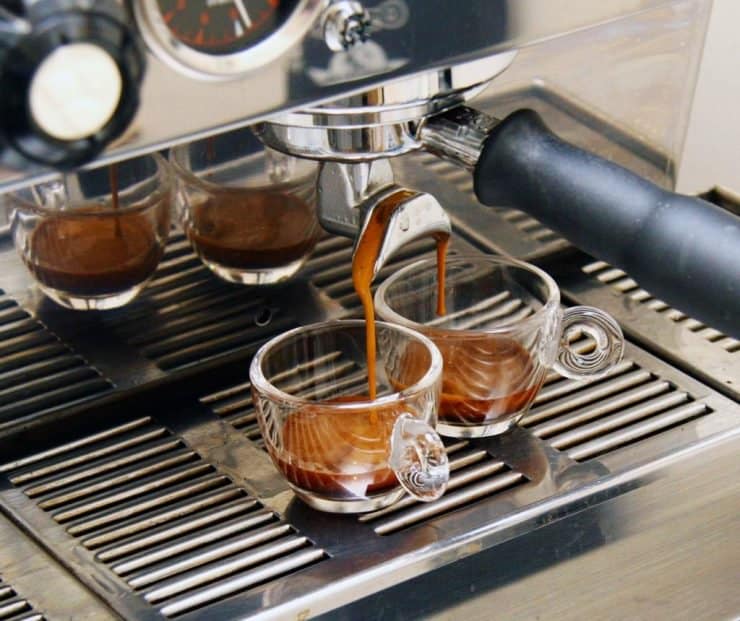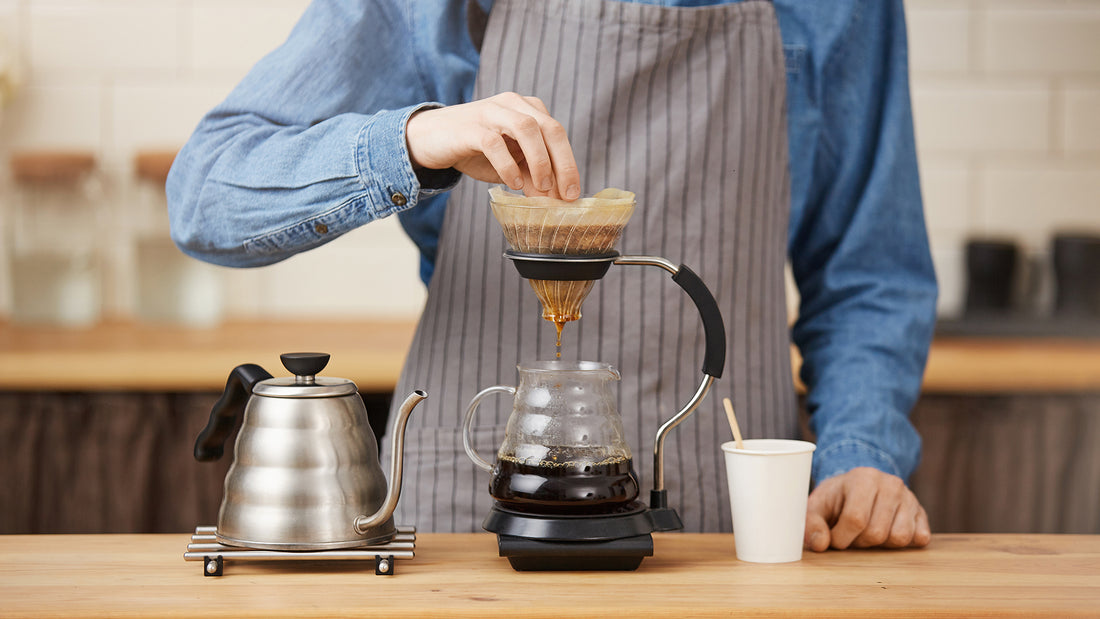Ingenious Coffee Brewing Methods to Elevate Your Early Morning Activity
Ingenious Coffee Brewing Methods to Elevate Your Early Morning Activity
Blog Article
The Scientific Research Behind Coffee Developing: Just How Temperature Level and Time Affect Your Beverage
Understanding the scientific research behind coffee developing discloses that temperature level and time are not plain variables yet pivotal aspects that determine the beverage's taste profile and general high quality. As we explore the subtleties of these elements, the question arises: just how can one properly balance temperature and time to accomplish that ideal brew?
The Chemistry of Coffee Extraction
The chemistry of coffee extraction dives into the complex procedures that change raw coffee beans right into the aromatic drink enjoyed worldwide. This transformation largely entails the solubility of different compounds existing in the beans, which are affected by variables such as work size, water top quality, and the developing method used.
During the brewing process, warm water acts as a solvent, extracting soluble compounds, consisting of caffeine, sugars, lipids, and acids, from the coffee premises. Each substance contributes to the flavor account, aroma, and body of the last beverage. Acids are accountable for bright and appetizing notes, while oils add to a rich mouthfeel.
The preliminary stages of developing essence acids and sugars, leading to a pleasurable acidity, while long term extraction can lead to bitterness due to over-extraction of unwanted substances. Comprehending these chemical communications is crucial for maximizing brewing methods, as the equilibrium between extraction time and water temperature level can dramatically affect the total quality of the coffee.
Perfect Brewing Temperatures
Finding the ideal developing temperature is essential for unlocking the complete possibility of coffee flavors and fragrances - coffee brewing methods. Research indicates that the ideal range for brewing coffee lies in between 195 ° F to 205 ° F(90 ° C to 96 ° C) Within this variety, the removal process successfully liquifies the preferable soluble substances in coffee beans, causing a well balanced and savory mug
Developing at lower temperatures, such as listed below 195 ° F(90 ° C ), may result in under-extraction, yielding an acidic and weak brew with muted flavors. Conversely, developing at temperature levels exceeding 205 ° F(96 ° C) can result in over-extraction, creating a rough and bitter taste because of the too much dissolution of unwanted substances, such as tannins.
In addition, the optimal brewing temperature level can vary depending on the coffee bean type and roast degree. For example, lighter roasts typically gain from a little higher temperature levels to improve their complex flavor accounts, while darker roasts may be much better fit to lower temperature levels to mitigate anger.
Inevitably, keeping accuracy in developing temperature levels is essential for accomplishing an unified equilibrium of tastes, guaranteeing that every mug of coffee provides a gratifying sensory experience.
Effect of Developing Time
Brewing time plays a pivotal duty in identifying the taste account and general high quality of coffee. The extraction process, which affects the taste, fragrance, and body of the drink, is mostly based on just how long the coffee grounds are in contact with water. Shorter brewing times can result in under-extraction, resulting in a sour or weak taste, as inadequate soluble substances are liquified. Conversely, prolonged brewing can result in over-extraction, where unfavorable substances are launched, causing a bitter or astringent preference.
Ideal brewing time varies depending upon the technique used and the grind dimension of the coffee. For instance, a French press commonly needs concerning 4 mins, while coffee removal is normally finished within 25 to 30 secs. It is important to calibrate developing time in combination with Find Out More other variables, such as water temperature level and coffee-to-water proportion, to attain the preferred taste profile.
Understanding the influence of brewing time allows coffee enthusiasts to improve their brewing strategies, inevitably improving the sensory experience of their cup (coffee brewing methods). With careful interest to this variable, one can unlock the full possibility of the coffee, disclosing its unique characteristics and subtleties
Developing Approaches and Their Results

For circumstances, approaches like French press and cool brew permit a much longer steeping time, resulting in a fuller body and durable flavor as a result of increased removal of oils and soluble solids. On the other hand, espresso brewing uses high pressure and a much shorter extraction time, creating a concentrated shot that highlights intense tastes and a rich crema.
Pour-over strategies, such as Chemex or V60, supply a more regulated removal process, permitting the maker to manipulate flow rate and water distribution, which can boost illumination and clarity. Percolation approaches cycle water through the coffee premises numerous times, leading to a stronger, often bitter flavor.
Finally, the use of paper filters versus metal filters can likewise influence the final preference; paper filters generally generate a cleaner mug by trapping oils and great bits, while metal filters allow even more oils to go through, adding to a useful site fuller mouthfeel - coffee brewing methods. Understanding these nuances can raise the coffee experience substantially
Tips for Improving Your Mixture
A well-executed mixture can change even the easiest coffee right into a remarkable experience. To achieve this, focus to information is crucial. Begin with premium, freshly roasted beans, as their taste account reduces gradually. Grind the beans right before making to make best use of quality, making sure the work size matches your developing approach-- coarser for look at here now French press and finer for espresso.
Water top quality plays a vital duty; usage filteringed system water devoid of impurities. The excellent brewing temperature varies in between 195 ° F and 205 ° F(90 ° C to 96 ° C ) Also hot can swelter the coffee, while also cool may under-extract flavors.
Timing is just as crucial. For immersion approaches, steeping for three to 5 mins is ideal, whereas drip approaches normally take about 5 minutes. Experiment with mixture times to locate your recommended strength.

Verdict
In summary, the intricate relationship in between temperature level and time is paramount in the coffee brewing procedure. Complying with optimal brewing temperature levels in between 195 ° F and 205 ° F, alongside precise timing customized to every technique, makes certain the preferred taste profile is achieved. Comprehending these scientific concepts empowers people to fine-tune their developing strategies, ultimately resulting in a much more pleasurable and balanced coffee experience. Mastery of these variables is crucial for any coffee enthusiast seeking excellence in their drink.
Comprehending the scientific research behind coffee brewing discloses that temperature level and time are not simple variables however crucial aspects that determine the drink's flavor account and total top quality. Recognizing these chemical communications is vital for enhancing brewing methods, as the balance between removal time and water temperature can dramatically affect the total top quality of the coffee.Developing time plays an essential function in establishing the taste profile and general high quality of coffee. By concentrating on these aspects-- bean quality, grind size, water temperature level, steeping time, and ratio-- you can raise your coffee developing process, resulting in a continually remarkable mug.
In summary, the detailed connection between temperature level and time is critical in the coffee developing procedure.
Report this page